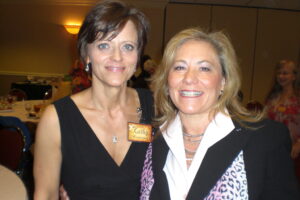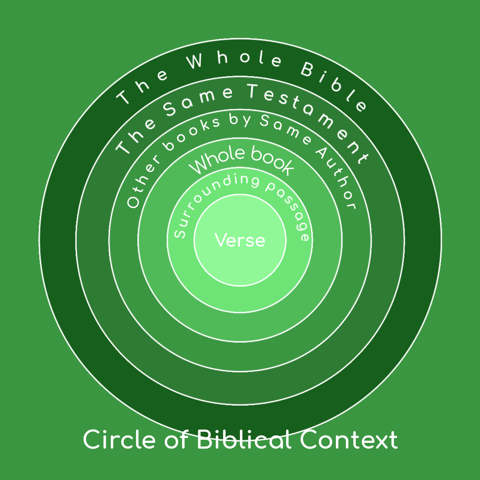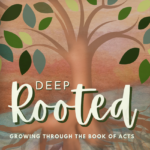In times of uncertainty, the power of prayer can bring comfort, unity, and divine intervention.…
The Circle of Biblical Context
In our Discovering the Bible series, my co-authors (Jean and Karla) and myself, try to remind our readers of how important it is to know the context around a verse. Today, I am sharing a deep dive into this topic from my friend, Kathy Howard, a dedicated Bible teacher who just released Deep Rooted: Growing through the Book of Acts”. Since we know you also care about “accurately handling the Word” (2 Tim. 2:15), please read through this blog to gain the strong skills of a solid Bible student. Enjoy!
how important it is to know the context around a verse. Today, I am sharing a deep dive into this topic from my friend, Kathy Howard, a dedicated Bible teacher who just released Deep Rooted: Growing through the Book of Acts”. Since we know you also care about “accurately handling the Word” (2 Tim. 2:15), please read through this blog to gain the strong skills of a solid Bible student. Enjoy!
From Kathy:
 Have you ever begun watching a movie by yourself only to have someone else wander in and sit down half-way through? They may have begun asking lots of questions like “Who is that?” or “Why are they so upset?” Your response may have been something like “You really need to see the whole thing…”
Have you ever begun watching a movie by yourself only to have someone else wander in and sit down half-way through? They may have begun asking lots of questions like “Who is that?” or “Why are they so upset?” Your response may have been something like “You really need to see the whole thing…”
We all know we can’t start in the middle of a movie and really understand it. And yet, we often try to do that with the Bible. For instance, it is so tempting to pull a verse we like out by itself then examine it alone. But when we do, it’s easy to misunderstand it and thus misapply it.
Philippians 4:13 is one of the most-loved, but sadly most misused, verses in all of the Bible. Often, when it’s pulled out of context, it’s used as a proof text to say “I can do big and great things for God because He will  strengthen me to do it.” But, in the surrounding passage Paul recounts how he learned to be content whether he had enough to sustain his physical needs or not. He found contentment in every circumstance because Jesus gave his strength. This actual meaning is far different than the popular, misguided understanding. (Also see “Do You Misuse Philippians 4:13?”)
strengthen me to do it.” But, in the surrounding passage Paul recounts how he learned to be content whether he had enough to sustain his physical needs or not. He found contentment in every circumstance because Jesus gave his strength. This actual meaning is far different than the popular, misguided understanding. (Also see “Do You Misuse Philippians 4:13?”)
Circle of Biblical Context
In order to correctly understand the Bible, no matter how large or small the passage, we must keep it in the right context. “Context” refers to the parts of a written or spoken statement that precede or follow it, usually influencing its meaning or effect. “Context” also refers to the set of circumstances or facts that surround a particular event or situation.
Keeping context in mind is vital when we study the Bible. All scripture has just one meaning – God’s original meaning. The goal of Bible study is to interpret that meaning and then apply God’s truth. Context shapes and informs the original meaning of every Bible passage. (Also see “4 Things to Consider for Biblical Context” and “4 R Bible Study Method.”).
We can’t properly understand any Bible passage without considering the context. Each verse is part of a larger passage. Each passage is part of a book. And each book is part of the whole Bible. Thus, every verse is part of an expanding “circle of context:”
- The surrounding passage
- The whole book
- Other books by the same author
- The same Testament
- The whole Bible
Context Matters
Verse and chapter markings were not part of the original manuscripts. These were added later to help us find where we are going in the Bible. Every “verse” is just a small part of an ongoing conversation, sermon, prophecy, explanation, narrative or more. They are not stand-alone statements.
Just like the surrounding passage shapes the meaning of one verse, the whole book shapes the meaning of each passage. Books, particularly the New Testament epistles, contain running arguments, consistent themes, and repeated literary devices. For instance, the book of Galatians has one major running theme – “Follow the Spirit, not the Law” – that helps us better understand individual pieces of the letter.
 It also helps to consider other books by the same author. Their doctrinal views will be consistent from book to book. So, for instance, if we’re struggling with the topic of grace in Romans, we can also read Paul’s writings on the topic in Ephesians. (See also, “Who wrote the Bible and Why Does it Matter?”)
It also helps to consider other books by the same author. Their doctrinal views will be consistent from book to book. So, for instance, if we’re struggling with the topic of grace in Romans, we can also read Paul’s writings on the topic in Ephesians. (See also, “Who wrote the Bible and Why Does it Matter?”)
Amazingly, although the Bible was written by more than 40 different God-inspired authors over roughly 1,500 years, both Testaments and the whole Bible contain one, consistent message. All the individual books and stories within the Bible join together to tell one big story: the rule, reign, and redemptive purposes of God.
This big story is also known as the meta-narrative. Every part of the Scripture fits within God’s big story. Keeping this in mind helps us understand the Bible and all the parts. We can ask: “Where does this fit in the Big Story? What does this teach us about God’s rule, reign, and redemption? No individual story will contradict the Big Story.
A Few Practical Tips
- If possible, read the entire book in one sitting, particularly the New Testament letters.
- Remember that chapter and verse divisions were added later and sometimes interrupt the natural flow of the author’s thought.
- No matter where you start – one verse or a larger passage – pull back and consider the larger context.
- Look for big themes and running arguments that impact the way we should understand the individual pieces of a book.
- Don’t forget the meta-narrative. Does your understanding of a verse or passage agree with the big story of Scripture?
Have you ever misunderstood a Bible verse or passage because you didn’t consider the literary context?
 Kathy Howard is a treasure hunter. She hunts for the creamiest chocolate, richest coffee, and cherished stories of faith. She also digs deep into Scripture, mining God’s eternal truths. Kathy has a Masters in Christian Education and has taught the Bible for more than 30 years in a wide variety of venues. Kathy is the author of 11 books, including “Heirloom: Living and Leaving a Legacy of Faith” and the “meaty” devotional series “Deep Rooted.” The “Deep Rooted” devotional books help readers learn how to get into
Kathy Howard is a treasure hunter. She hunts for the creamiest chocolate, richest coffee, and cherished stories of faith. She also digs deep into Scripture, mining God’s eternal truths. Kathy has a Masters in Christian Education and has taught the Bible for more than 30 years in a wide variety of venues. Kathy is the author of 11 books, including “Heirloom: Living and Leaving a Legacy of Faith” and the “meaty” devotional series “Deep Rooted.” The “Deep Rooted” devotional books help readers learn how to get into the Word for themselves. The newest volume, “Deep Rooted: Growing through the Book of Acts” is available now! Kathy and her husband live in north Texas. They have three married children, six grandchildren, and two accidental dogs. Find free discipleship resources at www.KathyHoward.org. You can also connect with Kathy on Facebook and Instagram.
the Word for themselves. The newest volume, “Deep Rooted: Growing through the Book of Acts” is available now! Kathy and her husband live in north Texas. They have three married children, six grandchildren, and two accidental dogs. Find free discipleship resources at www.KathyHoward.org. You can also connect with Kathy on Facebook and Instagram.

Thank you Pam for allowing me to share this with your readers!